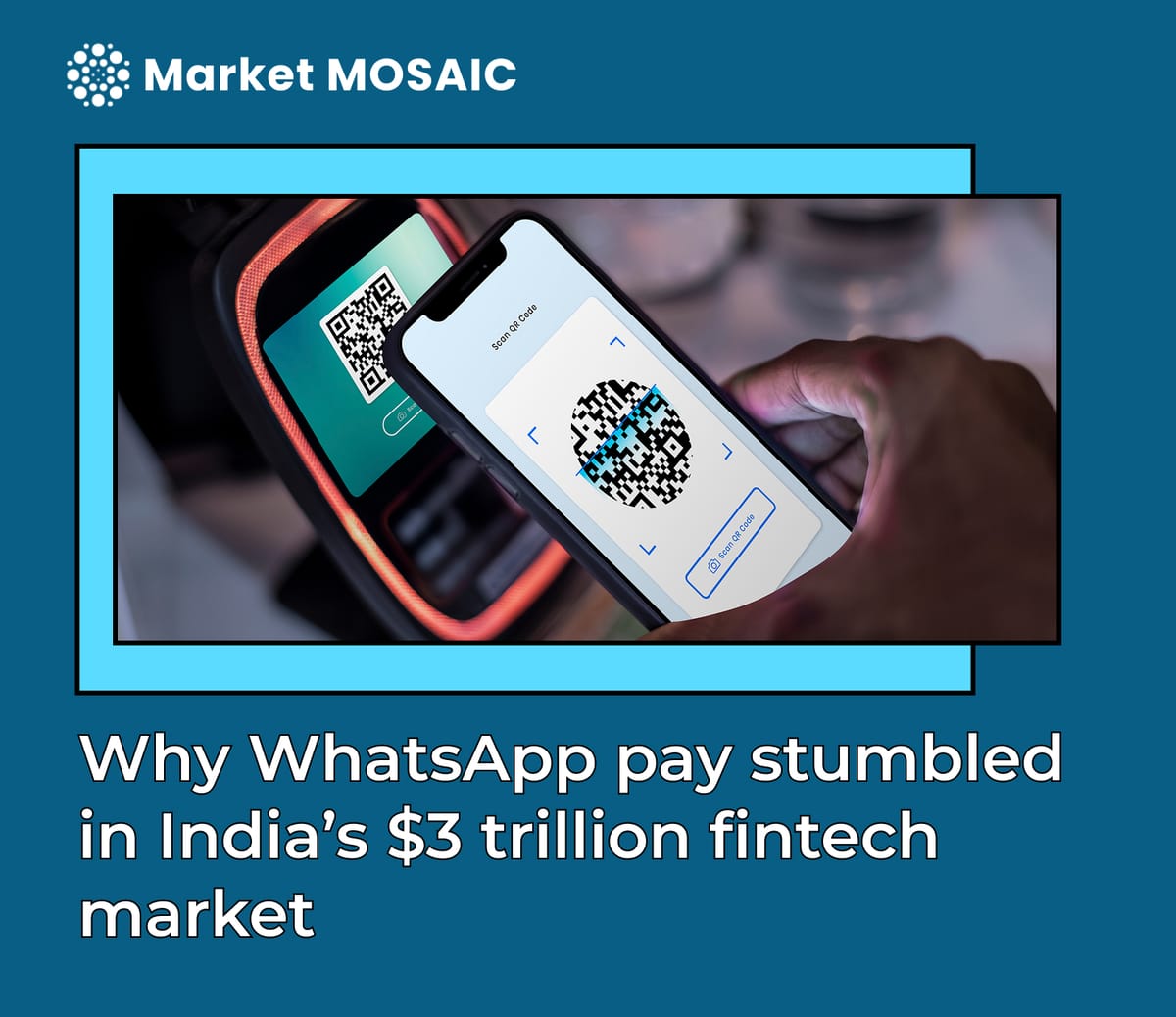Why WhatsApp pay stumbled in India’s $3 trillion fintech market
Despite reaching over 500 million users in India, WhatsApp Pay processed just few transactions The failure wasn’t due to lack of reach, but lack of focus.

In a country where more than 500 million people rely on WhatsApp daily to chat, share, and connect, converting even a fraction of those users into digital payment customers should have been straightforward. But in the heart of India’s $3 trillion fintech market, WhatsApp Pay failed to take off. While Google Pay and PhonePe logged a staggering 700 million and 500 million transactions respectively between December 2024 and May 2025, WhatsApp Pay managed only 12 million. The gap is not just wide, it’s revealing.
Digital payments are the backbone of modern commerce
The opportunity was never the problem. India is one of the most vibrant digital payment landscapes in the world. Mobile wallets like Google Pay and PhonePe aren’t just alternatives to cash, they are the infrastructure of everyday commerce. Digital payments allow even the smallest business owners to receive money from anyone, anywhere, using just a phone.
According to Shopify, people are expected to spend over $16.62 trillion globally through digital payments by 2028. Why? Because they’re fast, secure, and convenient. A smartphone becomes a wallet. A biometric scan becomes authorization. A merchant in a rural market can accept payment from a customer halfway across the world. For modern businesses, digital payments aren’t just about ease, they’re about scale.
The mechanics are simple, so why was WhatsApp so complicated?
At its core, digital payment technology is straightforward. A customer initiates a transaction; the payment is authorized via secure channels; funds move from one account to another, all within seconds. The entire process is designed for clarity and traceability, especially useful for record-keeping, tax filing, and fraud protection.
In theory, embedding this capability into a widely-used app like WhatsApp should have been revolutionary. The payments feature was hard to find, hidden in chat threads rather than presented as a core offering. The onboarding process was underwhelming. There were no rewards, no merchant partnerships, no compelling reason for users to change behavior. What should have been a game-changer became an afterthought.
Focus builds trust And trust powers transactions
Consumer behavior in financial services is shaped by three things: visibility, credibility, and ease of use. WhatsApp Pay offered none at scale. Where Google Pay and PhonePe signaled their role as financial platforms backed by aggressive marketing, intuitive user interfaces, and powerful partnerships WhatsApp Pay remained passive.
Trust, particularly in financial transactions, isn’t inherited, it's earned. Indian consumers, who were willing to entrust WhatsApp with their conversations, weren’t ready to trust it with their money. And WhatsApp didn’t give them a reason to.
Lessons for Founders and Business Leaders
WhatsApp Pay’s story is more than a case study in product design failure, it’s a blueprint of what not to do when entering a trust-based industry. In fintech, you can’t soft-launch your way into market leadership. Consumers need to know you’re in it for the long haul. Payments can't be a feature, they must be a focused offering with a clear value proposition.
This is especially important for business leaders navigating digital transitions. From neighborhood vendors to growing online stores, today’s businesses rely on seamless, secure payments to function. The platform that facilitates this becomes a growth partner, not just a utility. Business owners want more than functionality; they want reliability, transparency, and support. WhatsApp, for all its scale, didn’t meet that standard.





